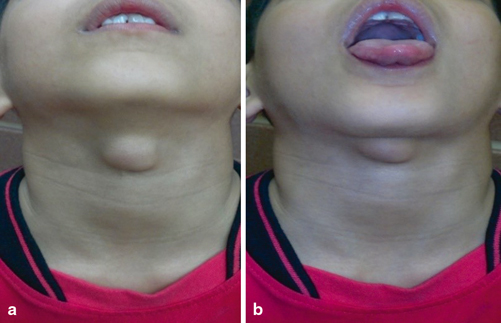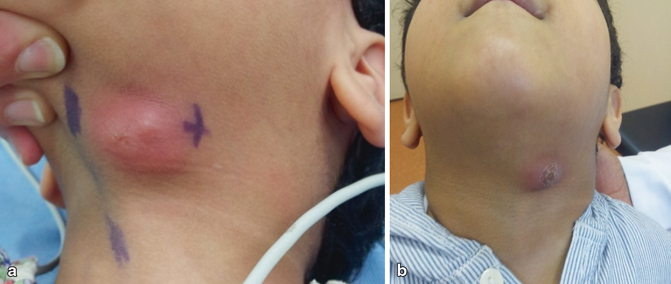Fig. 10.1
Clinical photographs showing midline neck swelling (a) and a slightly more swelling to the left side (b)
Usually painless, smooth, and cystic.
A thyroglossal cyst will move upwards with protrusion of the tongue (Fig. 10.2).

Fig. 10.2
Clinical photographs showing midline neck swelling (a) that moves with protrusion of the tongue (b)
Thyroglossal cysts typically present in children and young patients, with an average age at the presentation of 6 years. About 50 % of patients are present before 20 years of age but a significant percentage (15 %) present after 50 years of age.
They may become infected and present with pain, redness, and tenderness (Fig. 10.3).

Fig. 10.3
Clinical photographs showing infected thyroglossal cyst with abscess formation (a) and infected thyroglossal cyst which formed a fistula (b)
A thyroglossal cyst can develop anywhere along a thyroglossal duct, though cysts within the tongue or in the floor of the mouth are rare.
The most common location for a thyroglossal cyst is midline or slightly off midline, between the isthmus of the thyroid and the hyoid bone, or just above the hyoid bone.
Stay updated, free articles. Join our Telegram channel

Full access? Get Clinical Tree


